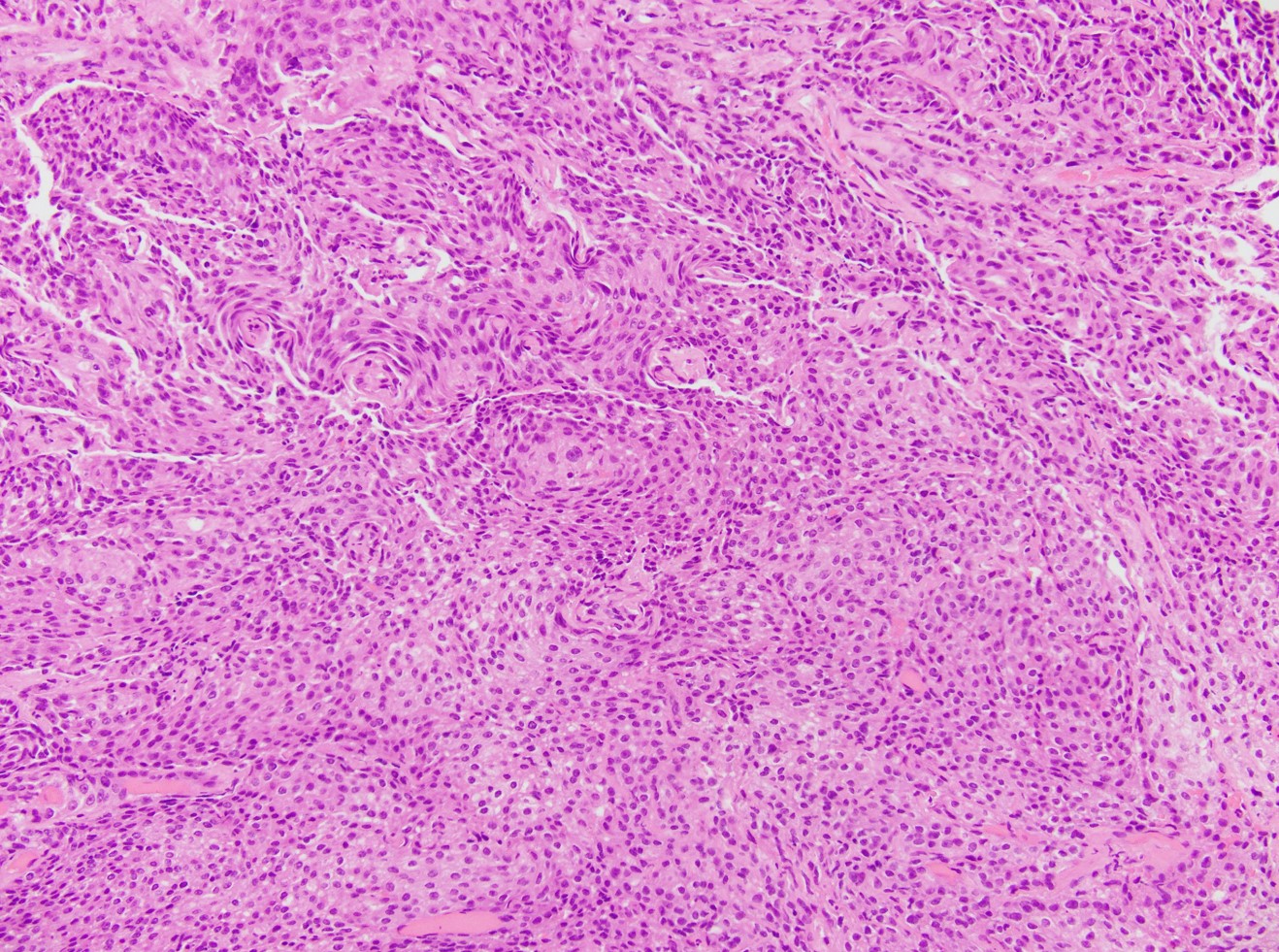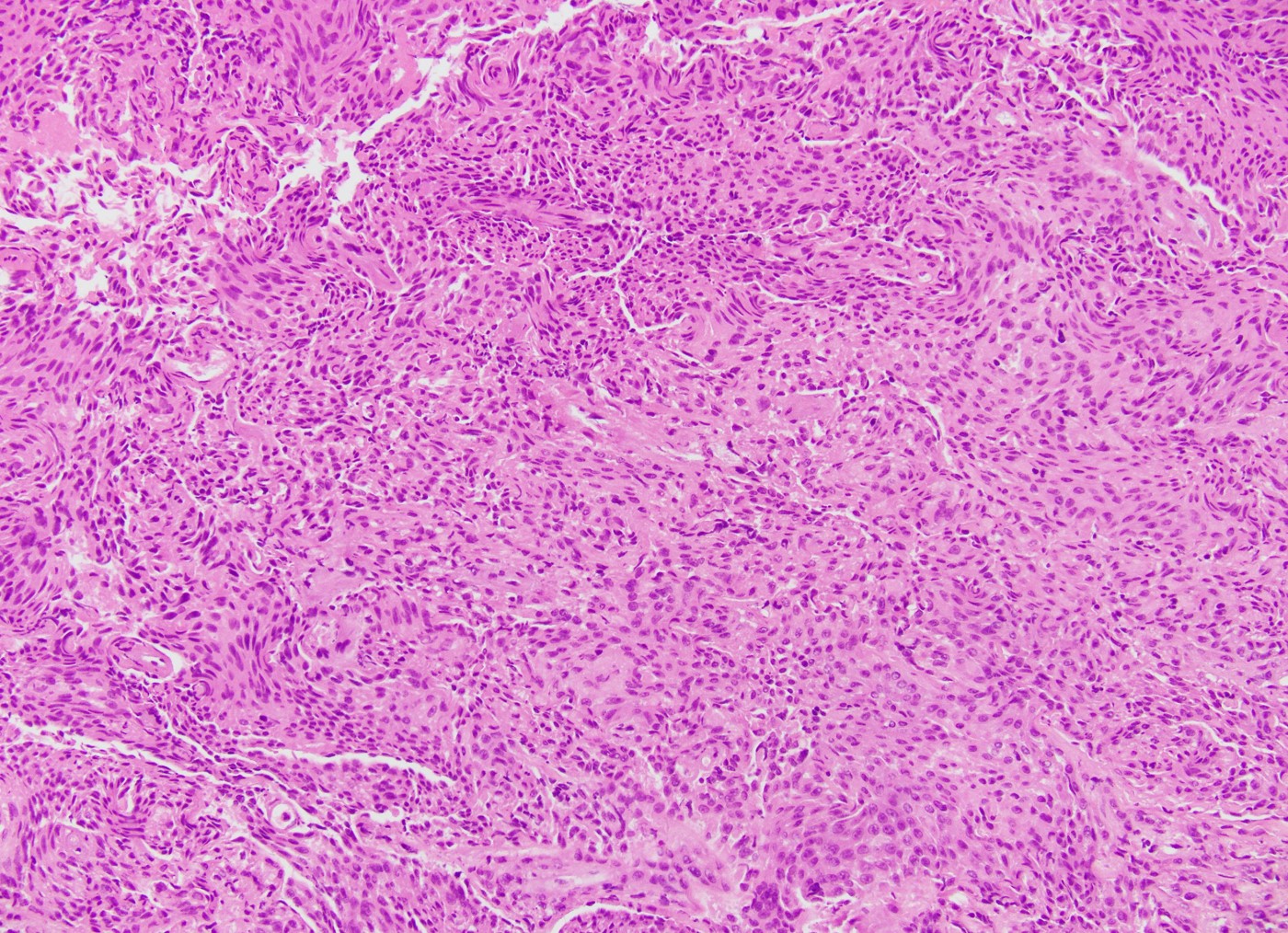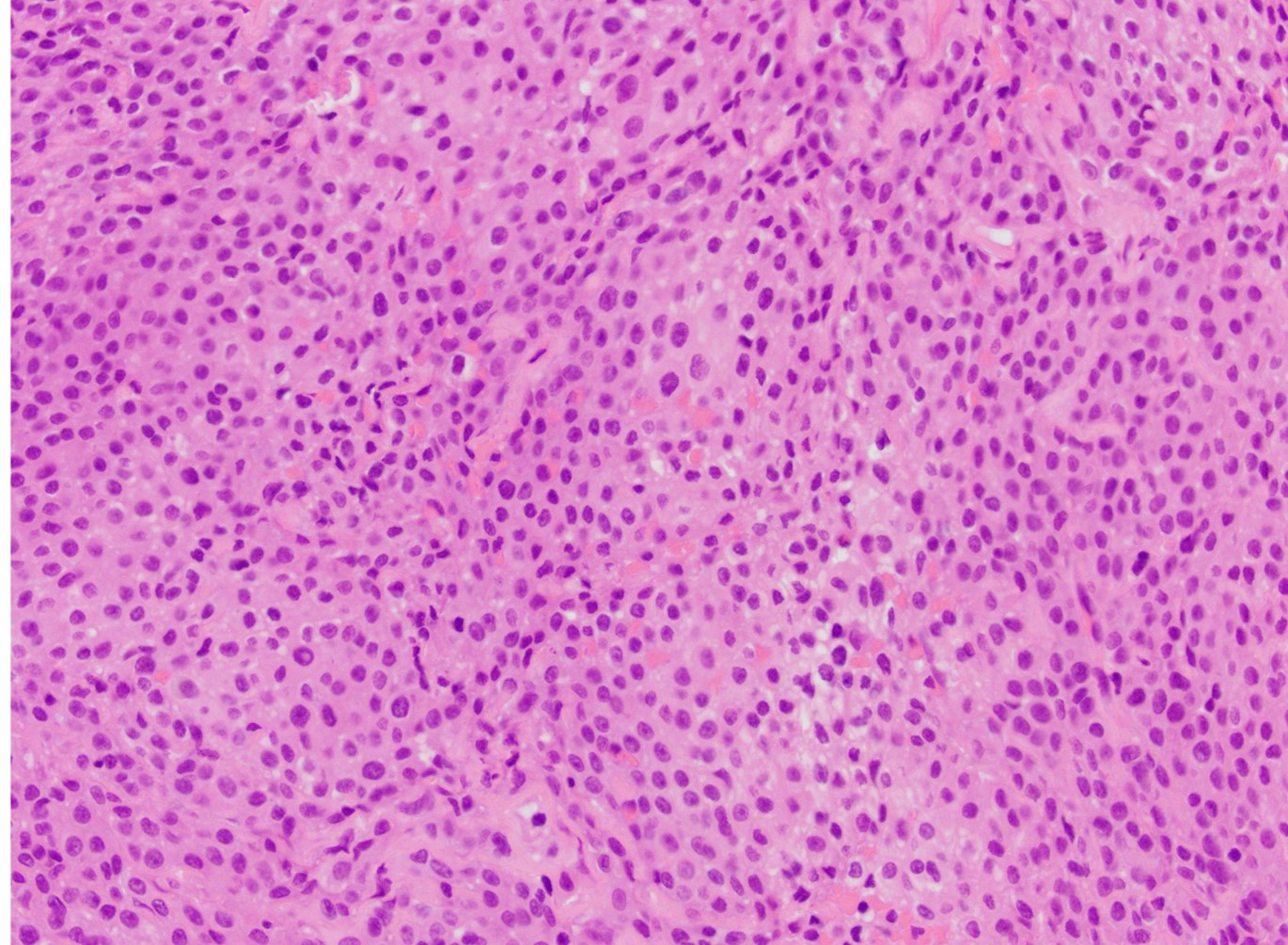Case History
A 55-year-old woman with a diaphragmatic mass. What is a favorable diagnosis?
A. Reactive mesothelial proliferation
B. Metastatic squamous cell carcinoma
C. Malignant mesothelioma
D. Malignant melanoma



This case is malignant mesothelioma. It is a malignant neoplasm of mesothelial differentiation that arises from mesothelial lining cells. It’s an aggressive neoplasm. Strong association with asbestos exposure either occupational (e.g., shipbuilding, construction, automotive industry) or residential (industrial contamination, environmental/domestic).
Histomorphology: Tumefactive growth of malignant cells. Invasion of neoplastic cells into adipose tissue, skeletal muscle, or lung. In contrast, benign pleura: mesothelial cells are horizontally oriented, venules are perpendicular oriented, zonation of mesothelial cells [highest cellularity near the serosal surface, trailing off toward chest wall], no invasion, and no tumefactive growth.
Malignant mesothelial cells are either of epithelioid (epithelioid subtype) or spindled (sarcomatoid / desmoplastic subtype) cytology or a combination thereof (biphasic). If biphasic: provide a percentage of sarcomatoid component. Cytology is usually bland in epithelioid subtype. Desmoplastic variant: paucicellular, usually bland appearing spindle cells growing in a storiform pattern in a collagenized background with stromal invasion and possible bland necrosis. 2 - 5% show cytoplasmic mucin. Psammoma bodies might be present in any pattern, be aware of reactive spindle cells that might mimic sarcomatoid component.
Patterns of growth: solid, acinar (glandular), tubulopapillary, trabecular, micropapillary, microcystic (adenomatoid), clear cell, deciduoid, and small cell.
No single marker sufficiently sensitive or specific for mesothelial differentiation → panel of at least two carcinoma markers (e.g., MOC31, BER EP4, among others) and two mesothelial markers (i.e., WT1, calretinin, CK5, CK5/6, and D2-40).
Loss of expression of BRCA1 associated protein (BAP1) or methylthioadenosine phosphorylase (MTAP) or homozygous deletion of cyclin-dependent kinase inhibitor 2A (CDKN2A) (p16) by FISH helps to distinguish reactive mesothelial proliferation from malignant pleural mesothelioma.